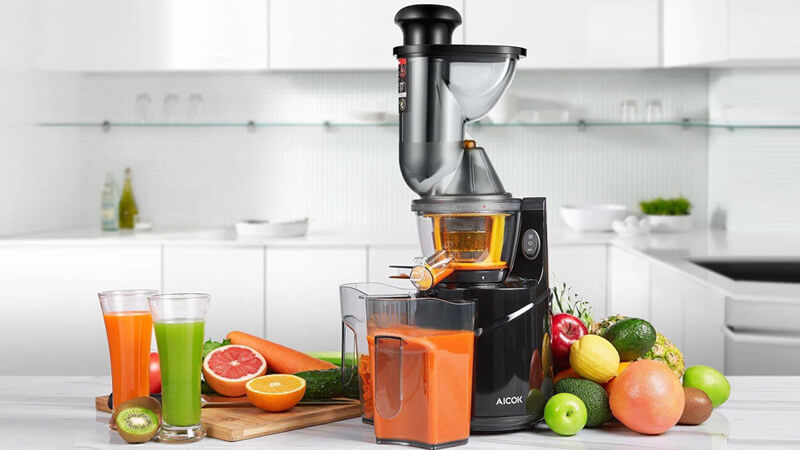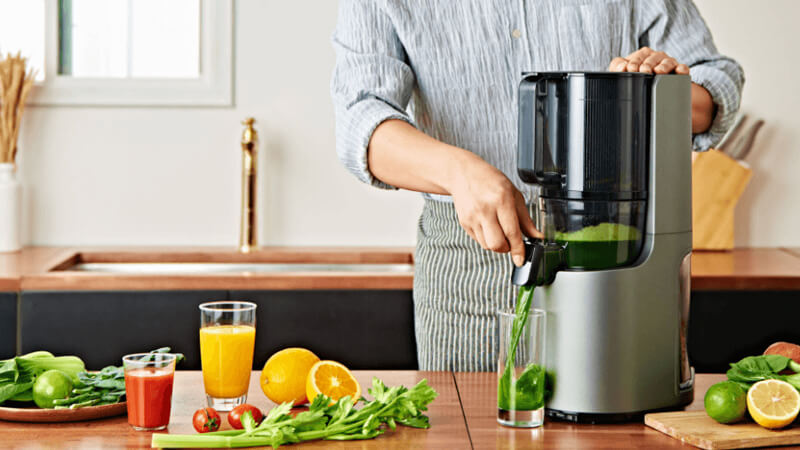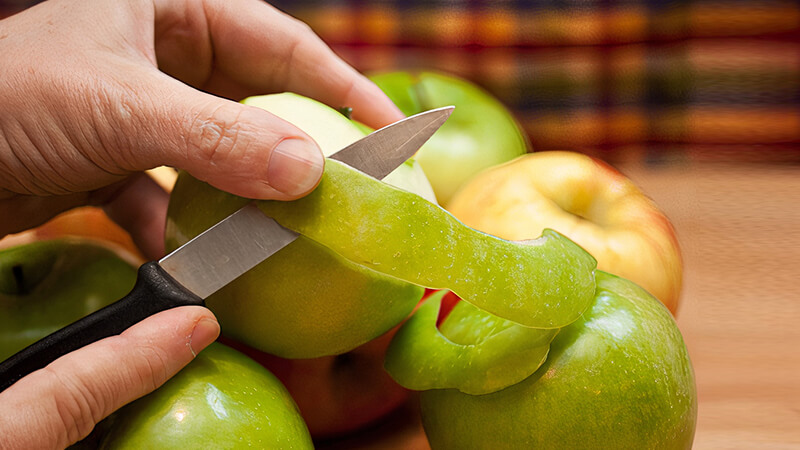Knowing how to use a device and being aware of any precautions are essential steps to operating it correctly, maintaining its longevity, and ensuring its durability. In this article, we will be focusing on slow juicers and providing some essential tips for their usage.
Slow juicers, as the name suggests, operate at a slower pace, extracting pure and nutritious juice from various ingredients. We will be covering some key points to keep in mind when using a slow juicer. Let’s dive in!
1 Principles of Juicing
It is recommended to follow this principle: Soft before hard – less fibrous before more fibrous.
This means alternating between softer and less fibrous ingredients such as watermelon, oranges, kiwi, avocado, grapefruit, etc., and then moving on to harder and more fibrous ones like carrots, beets, ginger, spinach, etc.
The idea behind this is to use the harder and more fibrous ingredients to push out the pulp of the softer ingredients, preventing clogging and making cleaning easier.
 Juicing Principle: Soft before hard – less fibrous before more fibrous
Juicing Principle: Soft before hard – less fibrous before more fibrous
2 Cut Fibrous Vegetables into Shorter Lengths
In conjunction with the above principle, fibrous vegetables like carrots, apples, and pumpkin should be cut into smaller pieces or chunks that fit comfortably into the juicer’s mouth.
Leafy greens such as celery and spinach, which have long fibrous strands, should also be cut into shorter lengths of 1-3 cm or rolled up before being fed into the juicer to prevent long fibers from tangling and causing damage. For ginger, it is recommended to cut it into a few millimeters.
 Cut Fibrous Vegetables into Shorter Lengths
Cut Fibrous Vegetables into Shorter Lengths
3 Chill the Ingredients Before Juicing
Chilling the ingredients before juicing makes them easier to process, resulting in less pulp. Additionally, the juice will be cooler and more refreshing to drink.
Pro Tip
For ingredients like pumpkin, carrots, and lotus root, if you cut them ahead of time and store them in the fridge, soak them in water first and then place the container in the fridge. This will prevent them from drying out and ensure you get more juice.
 Chill the Ingredients Before Juicing
Chill the Ingredients Before Juicing
4 Don’t Overload the Juicer
Slow juicers gradually grind and crush ingredients, so there is no need to overload the juicer by pushing or pressing too many ingredients into the feed tube at once.
Doing so may cause clogging, result in juice with more pulp, and reduce the lifespan of your juicer. The pusher should only be used when an ingredient is blocking the feed tube or when a soft ingredient is not moving down on its own.
 Don’t Overload the Juicer
Don’t Overload the Juicer
5 Ingredients to Avoid in a Slow Juicer
While slow juicers can handle a variety of fruits and vegetables, there are some ingredients that should be avoided:
- Sugarcane: Do not use a slow juicer to extract sugarcane juice.
- Citrus fruits like lemons, oranges, and tangerines, as well as apples and pears, should have their peels removed before juicing.
- Ice cubes or frozen fruits should not be put into a slow juicer as they can damage the auger and cause malfunction.
 Peel citrus fruits before juicing
Peel citrus fruits before juicing
These are some essential tips to keep in mind when using a slow juicer. We hope that this article will be helpful to you before you start using your slow juicer.

































